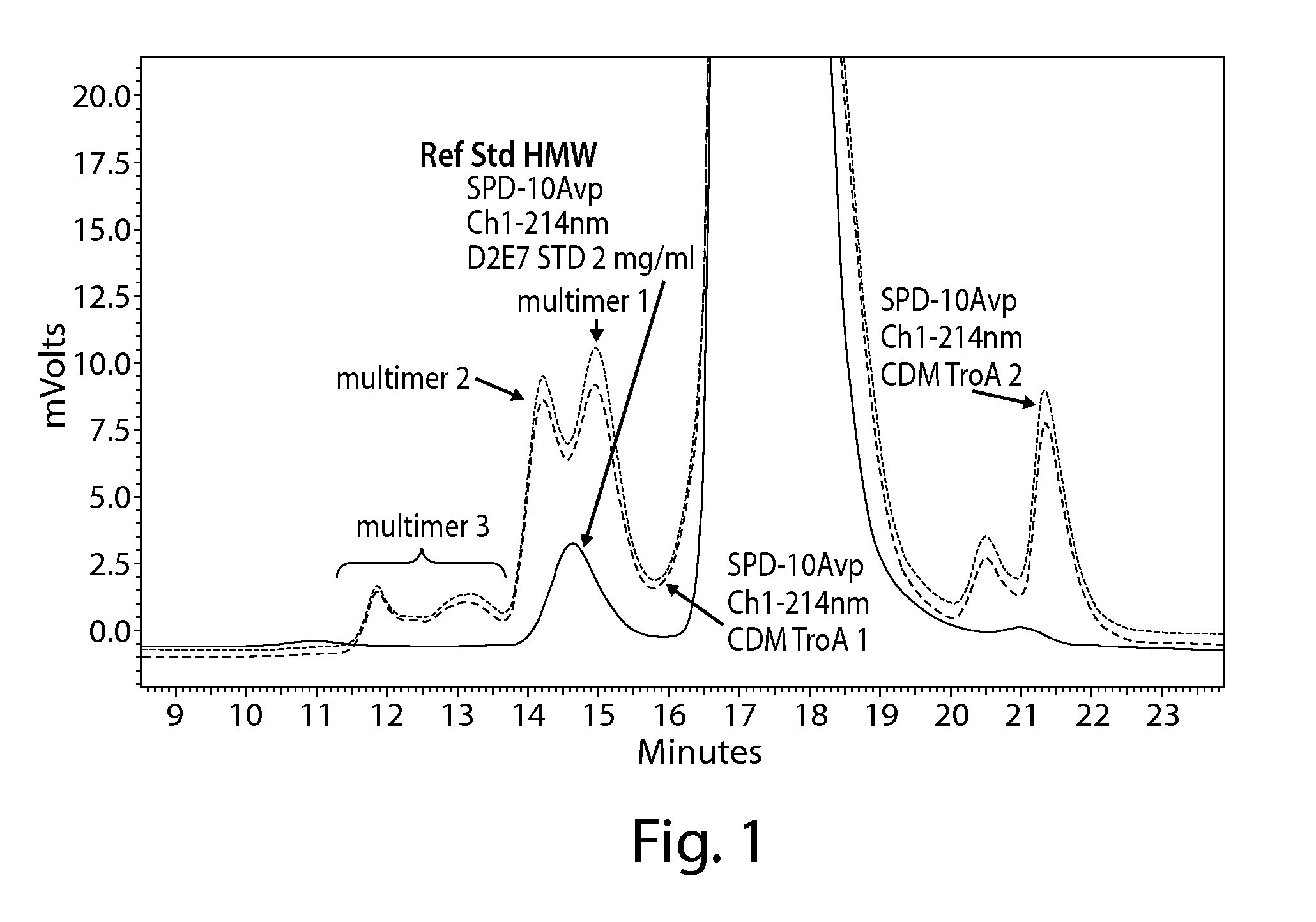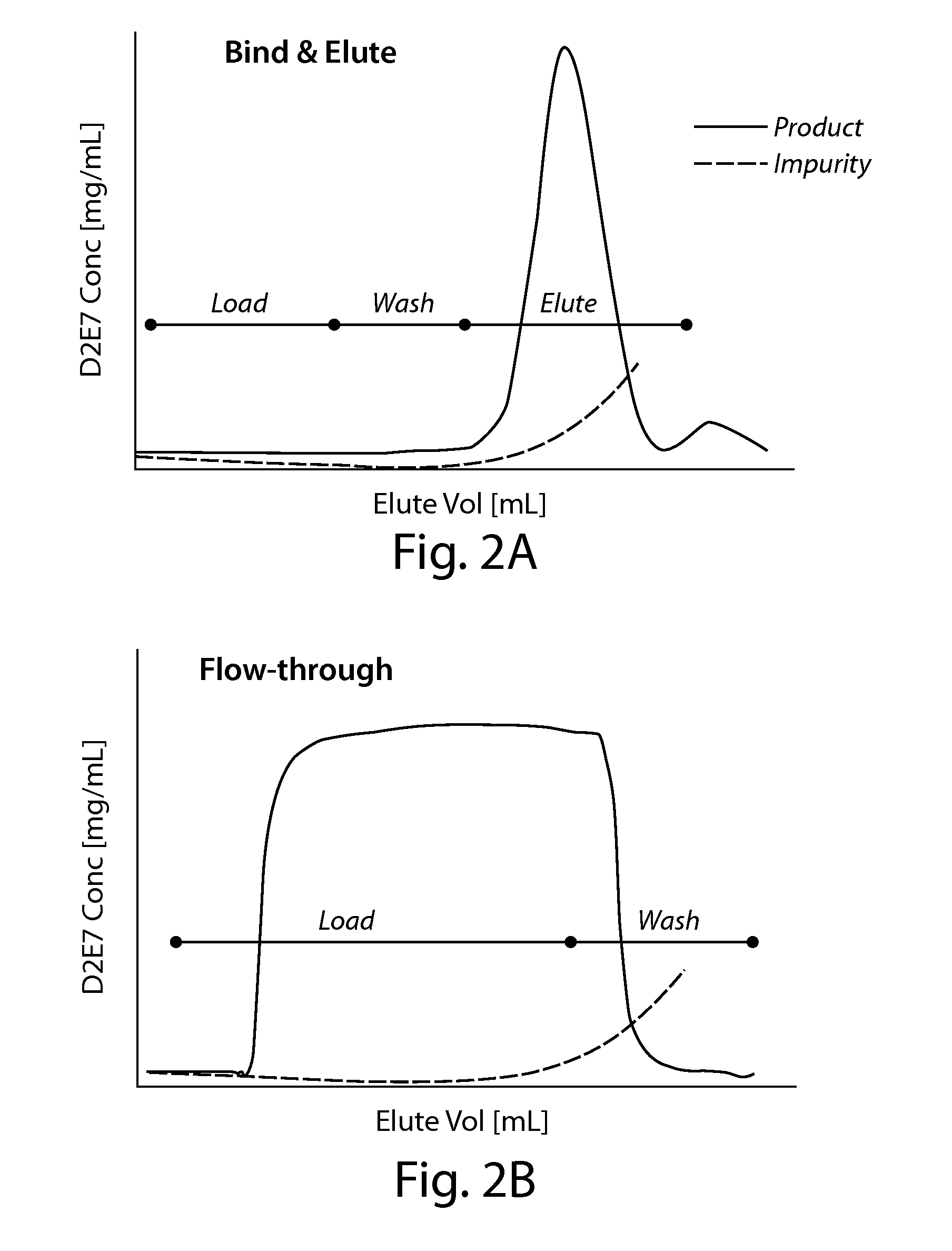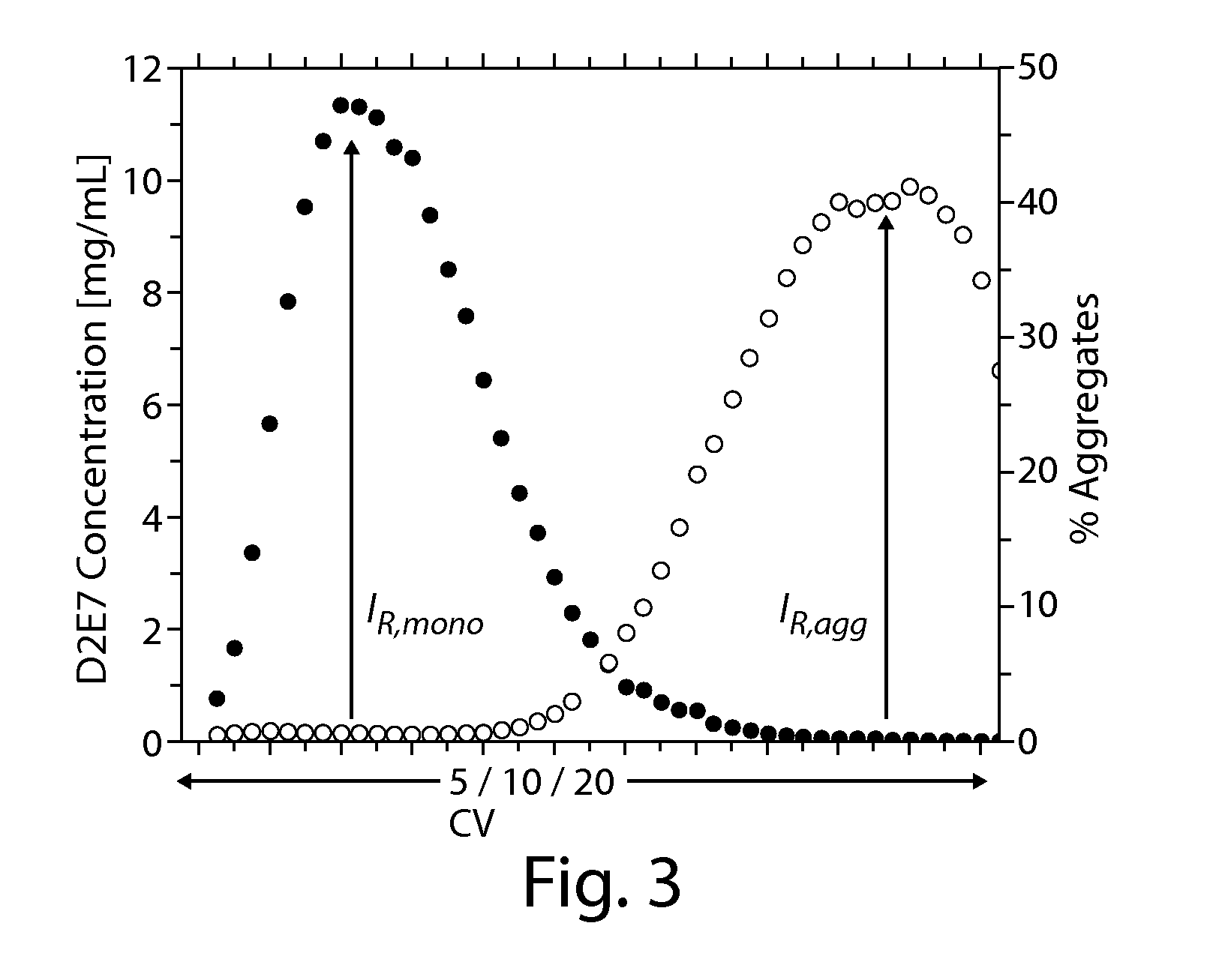Purification of proteins using hydrophobic interaction chromatography
- Summary
- Abstract
- Description
- Claims
- Application Information
AI Technical Summary
Benefits of technology
Problems solved by technology
Method used
Image
Examples
example 1
Determining Operating Conditions Appropriate for an mAb:Media:Buffer Combination
[0359]The demonstration of the current invention for a specific antibody & media is provided in this example, and consists of: 1) Choosing a salt concentration that allows product and impurities to bind at a given pH; 2) Loading a small amount of protein to the column and then performing a linear gradient elution by decreasing the salt concentration; 3) Determining salt concentration range in which the protein elutes from the HIC media.
[0360]In this example, adalimumab and GE CaptoPhenyl were chosen. The column was equilibrated at 1.1 M AmSO4 pH 7.0 (Tris / Acetate) for 10 CVs. Adalimumab was prepared at 1.1 M AmSO4 and loaded to the column at 20 g-protein / L of resin. The column was washed with 10 CVs of the equilibration buffer. A linear gradient from 1.1M to 0M AmSO4 pH 7.0 (Tris / Acetate) over 20CVs was performed. The process chromatogram is shown in FIG. 4.
[0361]This process can be repeated for any give...
example 2
Demonstration of Aggregate Reduction with HIC Resins
[0379]This data set is compiled to demonstrate the aggregate reduction achieved with six different HIC adsorbents. Each resin was evaluated with a 500 g / L load of adalimumab at a NaCit concentration near, and slightly higher than, the peak elution concentration determined from the process outlined in Example 1. Table 3 outlines the results from these experiments.
[0380]
TABLE 3Effect of HIC Resins on Aggregate Reduction of AdalimumabHIC ResinNaCit, pH 5.6ΔAggYieldButyl400 mM1.5%99.8%450 mM1.2%85.7%Hexyl240 mM1.2%93.9%300 mM1.1%100.9% Phenyl400 mM1.5%96.5%450 mM1.2%90.7%Octyl350 mM0.4%98.5%400 mM0.1%103.3% GE Butyl FF550 mM1.2%88.1%600 mM1.7%83.0%PPG450 mM0.2%97.5%600 mM1.0%38.1%
example 3
Demonstration of Aggregate Reduction with Other Antibodies, mAb B and mAb C
[0381]Aggregate reduction technology of the current invention has been demonstrated with multiple antibodies using HIC adsorbents. Antibodies have different hydrophobic properties, leading to interaction behavior on a HIC column that differs from one antibody to another. Therefore the impact of salt type and concentration is different for each antibody.
[0382]Table 4 and Table 5, presented below, provide the data obtained for mAb B and mAB C. The data clearly demonstrates that the aggregate reduction technology is effective for alternatives to adalimumab.
[0383]
TABLE 4Aggregate reduction for mAb B, pI~9.1HIC ResinAmSO4, pH 5.0ΔAggYieldHexyl370 mM0.8%100% 710 mM0.6%93%Phenyl340 mM0.6%95%790 mM0.5%95%Butyl840 mM0.6%99%1000 mM 0.6%96%
[0384]
TABLE 5Aggregate reduction for mAb C, pI~7.0HIC ResinAmSO4, pH 5.0ΔAggYieldHexyl 80 mM5.0%89.0%330 mM4.5%99.8%Phenyl130 mM3.5%92.8%480 mM2.9%92.8%Butyl690 mM5.2%93.5%880 mM5.4%8...
PUM
| Property | Measurement | Unit |
|---|---|---|
| Fraction | aaaaa | aaaaa |
| Fraction | aaaaa | aaaaa |
| Fraction | aaaaa | aaaaa |
Abstract
Description
Claims
Application Information
 Login to View More
Login to View More - R&D
- Intellectual Property
- Life Sciences
- Materials
- Tech Scout
- Unparalleled Data Quality
- Higher Quality Content
- 60% Fewer Hallucinations
Browse by: Latest US Patents, China's latest patents, Technical Efficacy Thesaurus, Application Domain, Technology Topic, Popular Technical Reports.
© 2025 PatSnap. All rights reserved.Legal|Privacy policy|Modern Slavery Act Transparency Statement|Sitemap|About US| Contact US: help@patsnap.com



